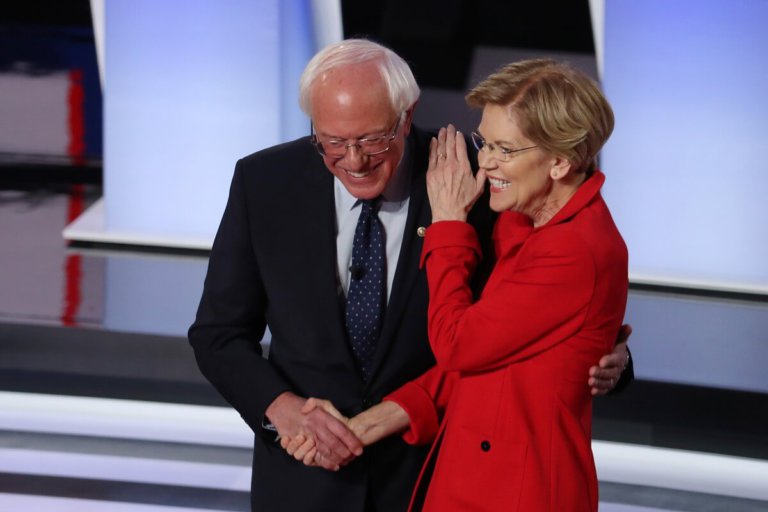
US Senators Bernie Sanders and Elizabeth Warren have both made headlines over their plans to wipe out the US$1.6 trillion student debt owed by some 45 million Americans, in addition to making public colleges and universities tuition-free.
Warren’s plan includes eliminating up to US$50,000 in student loan debt for every person with a household income of less than US$100,000, and cancelling a smaller amount for borrowers with a household income between US$100,000 and US$250,000.
Meanwhile, Sanders aims to eliminate tuition and fees at four-year public colleges and universities, tribal colleges, community colleges, trade schools and for apprenticeship programmes.
While both presidential hopefuls have gotten tongues wagging over their plans, how will it affect the estimated 1.09 million international students in the US? Neither Warren’s nor Sanders’ campaign page suggest that free college will be extended to international students.

Will free tuition at public colleges and universities apply to international students? Source: Shutterstock
Currently, international students can enjoy tuition-free education at some private institutions, but admission to these schools can be extremely competitive.
They may only admit students with limited financial resources, making admissions an issue for students who are “too rich to be poor” enough to qualify, but who may still struggle to get by, nonetheless. In exchange for free tuition, students work on campus for a certain number of hours per week.
For instance, Berea College in Kentucky notes: “No student pays tuition at Berea. All admitted students receive our No-Tuition Promise, which covers 100 percent of tuition costs. For most Berea students, the No-Tuition Promise amounts to over US$176,000 across four years.”
It adds: “The College admits only academically promising students with limited financial resources, primarily from Kentucky and Appalachia, although students come from 40 states and 70 countries,” adding that students work 10 hours or more weekly, earning money for books, housing and meals.
There’s much to gain from tuition-free public colleges
Assuming tuition-free education at public institutions is also applicable to international students, there’s no doubt that colleges and universities will see a spike in applications as the cost of studying in the US becomes considerably cheaper.
Free tuition will offset students’ cost of living, giving them more flexibility to choose their study location based on their interest rather than for financial reasons, and the chance to engage in other activities, such as domestic travel during their study breaks, should they chose to do so.
Interest in studying at private institutions may drop, while less selective institutions may need to step up efforts to attract international student enrollments, especially if non-native students are viewed as ‘cash cows’ to the university.
Free tuition at public institutions may also mean a higher number of international students expressing an interest in studying in the country, including those who may not have previously considered the US. For example, students who did not plan to study abroad may consider studying in the US if it’s cheaper than studying in their home country.
Students may also need to borrow less for their education in the US, which means they can potentially enjoy better economic stability upon graduation when not weighed down by student loans.
However, in the event the free college plan isn’t extended to international students, what possible scenarios could materialise?
Increased competition for public university enrollments
Free tuition may drive enrollment from local students in public colleges and universities – most likely among those from the lower and middle-income groups. Naturally, a large applicant pool would result in lower acceptance rates, which could mean the competition for international students to enter public universities may be tougher.
Quotas for international student intakes in public universities
Prestigious private institutions such as Harvard do not have quotas for international applicants, but could quotas become the new norm for international students in public universities that aim to attract a diverse student community?
Private institutions will need to attract more international students
Private colleges and universities stand to lose enrollments from local students as a result of tuition-free public institutions. Private schools that heavily rely on tuition for revenue may need to make their institution more attractive to woo international students. This could include offering incentives for applying, such as waiving application fees.
Soaring tuition fees at private universities
On the other hand, in the event entry into public universities becomes tougher for international students, private universities may be able to bank in on this situation by raising tuition fees to make up for fewer local student enrollments. However, if this happens, the US may lose is lustre as a popular study abroad option for international students who may flock to other countries with more affordable fees.
While the Sanders-Warren move should be welcomed, there’s no denying the repercussions it will have on international students and private institutions in the US.
Liked this? Then you’ll love…
Should international students consider applying to community college?
Hear them roar: Inspiring female academics who made waves in their fields







